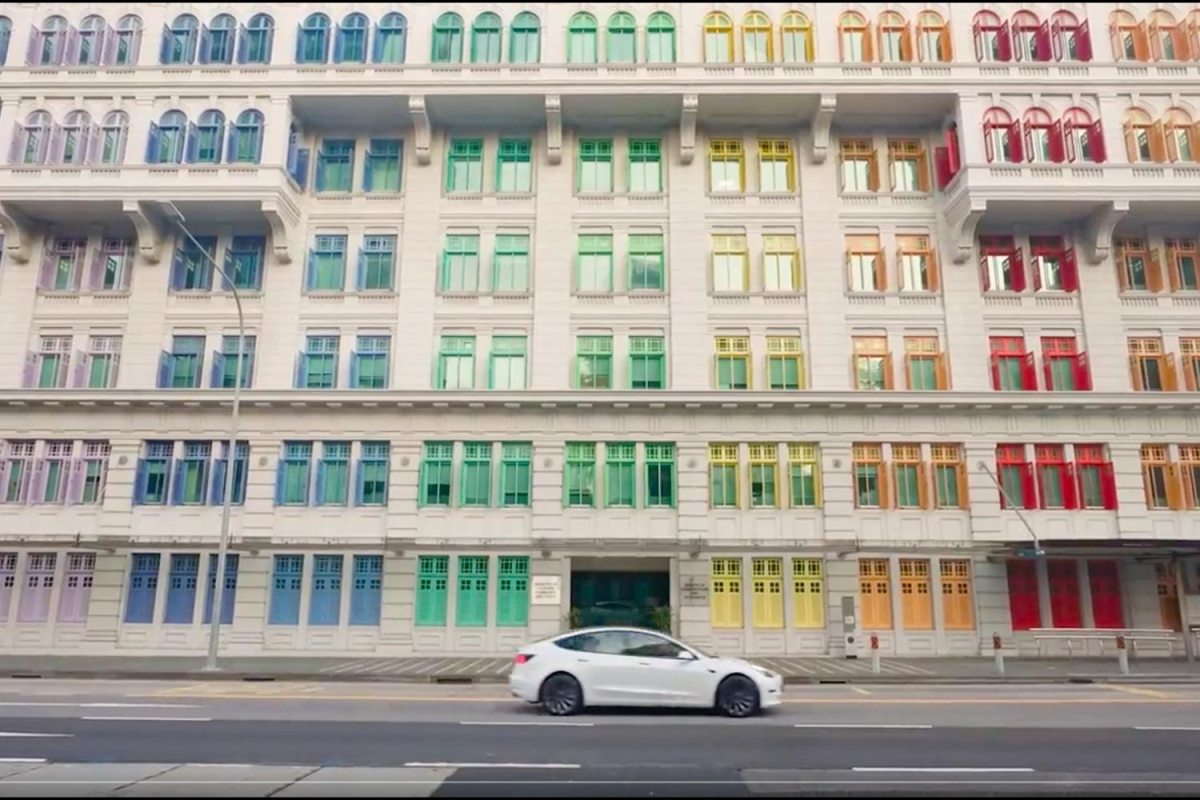
Tesla Breaks Tradition and Enters the Advertising Arena with a Personal Touch
Elon Musk's Strategic Shift Marks a New Era for the Electric Vehicle Manufacturer
Tesla, the renowned electric vehicle manufacturer, has recently made a surprising move by delving into advertising, breaking its two-decade-long tradition. In an attempt to reach a wider audience and educate consumers about its models and advanced technological innovations, Tesla released its first-ever commercial featuring a satisfied customer in Singapore.
The two-minute ad showcases Felicia, a Singaporean branch manager in the financial industry and a proud owner of a Tesla Model 3. She passionately shares her positive experience, highlighting the safety, cleanliness, and practicality of the Model 3. Felicia praises the smooth and secure driving experience, emphasizing the autosteer feature that keeps the car in its lane and alerts the driver of potential collisions. By incorporating a personal testimonial, Tesla adds a human touch to the advertisement, reinforcing its commitment to safety and innovation.
While Tesla's commercial focuses on the overall ownership experience and the everyday benefits of owning a Tesla, it notably does not explicitly mention the highly advanced Autopilot or Full Self-Driving Beta features. This strategic decision aims to establish a connection with potential customers who may not be familiar with the intricacies of advanced driver assistance systems. By emphasizing the tangible benefits of owning a Tesla rather than complex technological features, Tesla broadens the appeal and accessibility of its vehicles.
For Tesla, entering the advertising arena represents a significant shift in its strategy. CEO Elon Musk, previously resistant to traditional advertising, believed that the demand for Tesla vehicles surpassed supply without the need for marketing efforts. However, the increasing competition in the electric vehicle market and the necessity of raising awareness about Tesla's models and advanced features have prompted a change in approach.
Tesla's decision to advertise its vehicles also reflects the changing landscape of the electric vehicle industry. With existing automakers devoting significant portions of their advertising budgets to electric vehicles, Tesla recognizes the importance of promoting its brand to stay competitive. Furthermore, the introduction of the Tesla Model 3 in the Singaporean market has presented unique challenges due to the country's expensive car ownership process. Owning a car in Singapore requires obtaining a Certificate of Entitlement (COE) through an extensive bidding process, often costing tens of thousands of dollars. Despite these challenges, Tesla has gradually gained traction in Singapore, becoming the eighth best-selling brand in the country in February 2023.
Elon Musk's decision to venture into advertising marks a pivotal moment for Tesla. The company aims to educate consumers about its models, advanced features, and technological innovations, positioning itself as a leader in the electric vehicle industry. By embracing advertising, Tesla can reach a broader audience and attract new customers, aligning with its long-term goal of producing millions of vehicles annually.
In conclusion, Tesla's foray into advertising represents a departure from its traditional approach. The company's first commercial featuring a satisfied customer in Singapore highlights the practicality and safety of the Tesla Model 3. By prioritizing the overall ownership experience over complex technological features, Tesla aims to appeal to a wider audience. This strategic shift reflects the evolving landscape of the electric vehicle industry and Tesla's commitment to educating consumers about its brand and products. As Tesla continues to expand its presence globally, advertising will play a crucial role in establishing its position as a frontrunner in the electric vehicle market.
Read More
-
SCHD ETF Holds Ground With 3.6% Yield as Dividend Investors Eye Stability Over Growth
15.10.2025 · TradingNEWS ArchiveStocks
-
Ripple XRP (XRP-USD) Steadies at $2.43- SEC Shutdown Freezes ETF Decisions, Inflows Hit $61.6M
15.10.2025 · TradingNEWS ArchiveCrypto
-
NG=F Falls to $2.99 as Record Supply Outpaces Demand Despite 16.9 Bcf/d LNG Exports
15.10.2025 · TradingNEWS ArchiveCommodities
-
USD/JPY Price Forecast - Yen Weakens to 151.30 Amid Dollar Selloff
15.10.2025 · TradingNEWS ArchiveForex


















